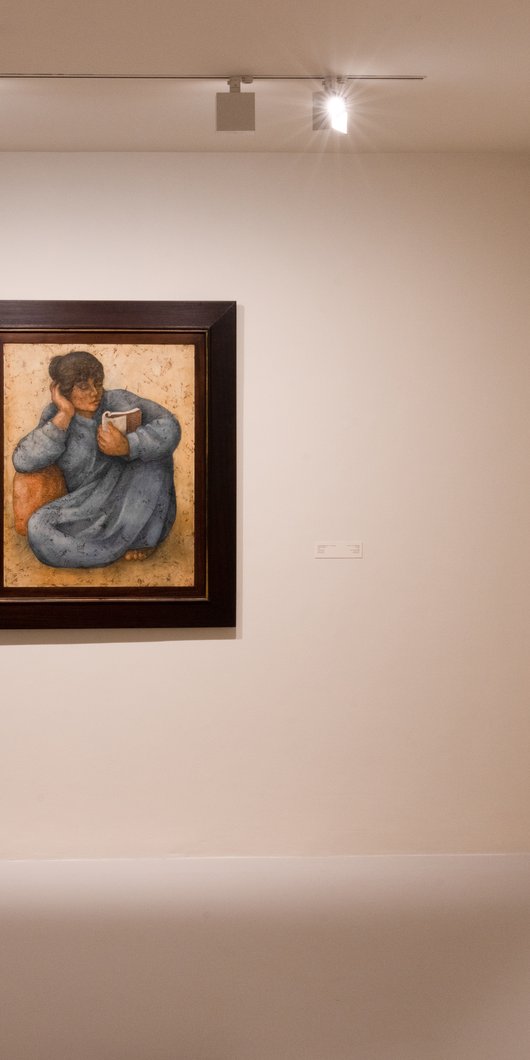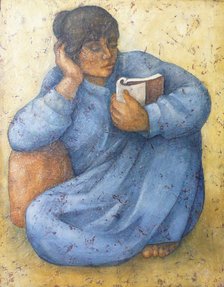Louay Kayali was born in Aleppo in 1934, and he had his first solo show at the age of only 18. His body of work is known for its portraits of people within the contexts of political and social change, as Syria transitioned to a modern and independent nation. More than a simple pictural representation, Kayali looked for the inner spirit of the Syrian people, to capture their essence and emotions.
After Syria’s independence from France in 1946, the modern art movement within the country developed towards a nationalist dynamic, especially when Egypt and Syria unified to become the United Arab Republic in 1958. Both Syrian and Egyptian artists freed themselves from the hegemony of European art academism to produce artworks relevant to the social realities of their countries.
Showing a mastery of drawing, Kayali particularly distinguished himself with a style through which he used simplistic lines and a distressed background to depict Syrians in their daily activities, as in the painting above. Coming either from the upper class, as seen in The Strange Lady Arlette Anhoury (1962), or the working class, his models were always treated equally in his representations.


